Comics have historically presented a complex relationship between superheroes and their costumes. The Amazing Spider-Man #50 famously sees Peter Park dump his costume in a trash can, leaving his life of crime-fighting symbolically behind. In Watchmen, Nite Owl II apparently can’t maintain an erection unless he’s in his cape and cowl. Costumes clearly have a range of influence on their owners. They can be a burden or a drug. Writer James Robinson and artist Paul Smith center their graphic novel JSA: The Golden Age around this influence.
The story takes place at the end of World War II. Various things kept the capes out of the war, things that were beyond their control. Their costumes, which once symbolized heroism, became the things that barred them from entering the fray. At the point that we join this story, the war has ended and the heroes have gone into retirement. Maybe out of embarrassment. Some went mad. And so JSA: The Golden Age is a graphic novel with very few costumes. Except in stock footage, where we learn of the “Golden Age” that makes the characters’ present-day feel so inadequate.
A Better Self
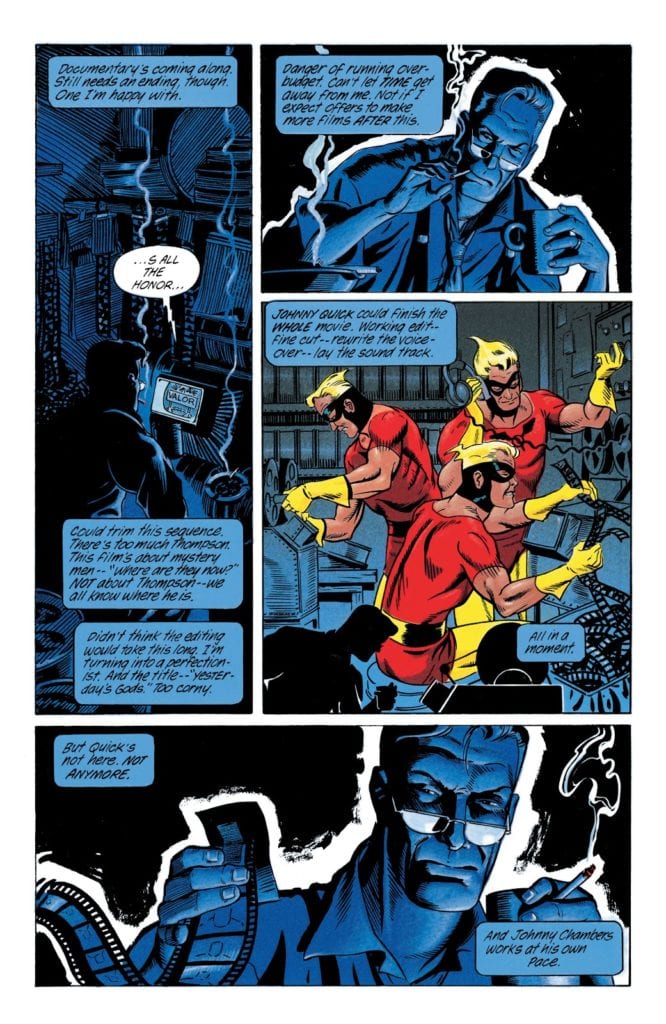
MFR ON YOUTUBE (latest video)
Help us reach 5K Subs!
Smith and Ory, don’t shy away from depicting the costumes vividly and romanticly when they’re seen. In old photographs and flashbacks, the heroes look downright majestic. But their present-day counterparts are bedraggled. It hurts to call them pathetic, but more because you know that’s the perfect word for them. Once the flashbacks and catch-ups are over, the costumes come off and for most of the comic, they stay off. The comic itself almost seems to have an aversion to superhero costumes. Flipping through it, you’d be hard-pressed to know it was a superhero comic at all.
Our narrator, Johnny Chambers is the secret identity of the speedster known as Johnny Quick. But we mostly know him in his civilian garb. He spends weeks working on the documentary which frames our story, a documentary called “The Golden Age.” His superhero alter ego could splice the whole thing together in minutes. But becoming Johnny Quick again means putting on the red spandex, and that’s something Chambers refuses to do. His costume, to him, represents his best self. So if he’s not his best, he doesn’t deserve the ol’ red and yellow.
Trauma
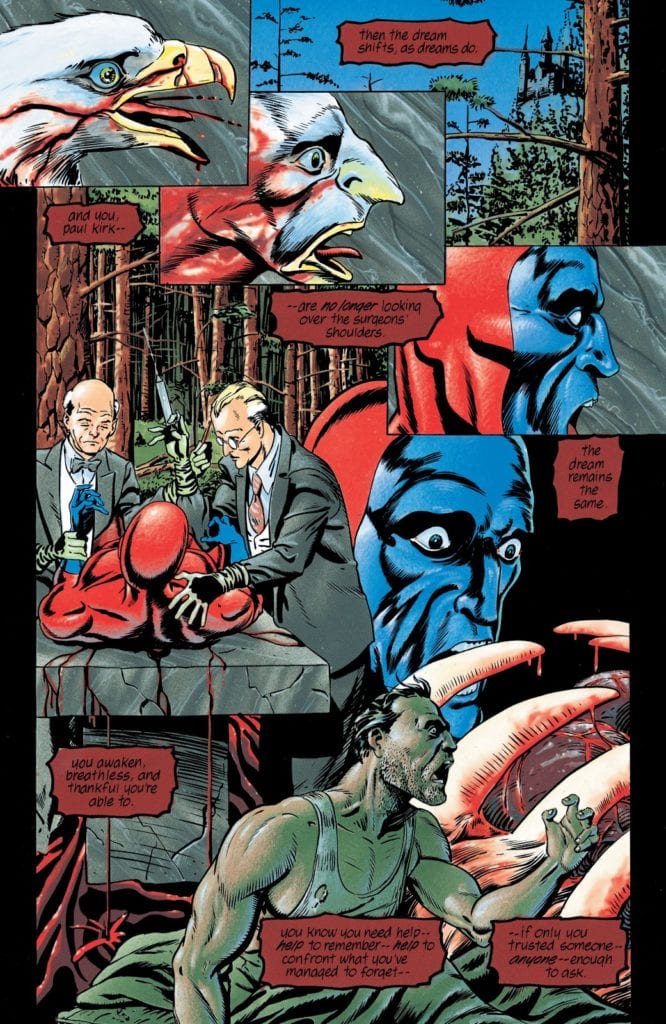
Other characters, like Starman, didn’t willfully give up their superhero careers. Instead, the pressures of war and his part in it, drove him mad. Ted Knight, Starman, is a shadow of his former self. He can barely hold conversations with other characters before losing his concentration. He has become trapped by the past, quite literally. His costume represents his own inadequacies and the things that brought him to an insane asylum. The Starman costume is a physical manifestation of his mistakes.
Paul Kirk, the Manhunter, has a similar trajectory in the graphic novel. He is haunted by dreams. Nightmares in which he wears his costume, like a claustrophobic skin that keeps him trapped. We learn later that Kirk’s nightmares are a result of horrors he witnessed while fighting crime. And so his costume has become a kind of trigger for his paranoia and fear. It was beneath that mask that he saw things he can never unsee. Robinson hides secrets of the past in Kirk’s nightmares, adding to the legitimacy of Kirk’s trauma.
Addiction
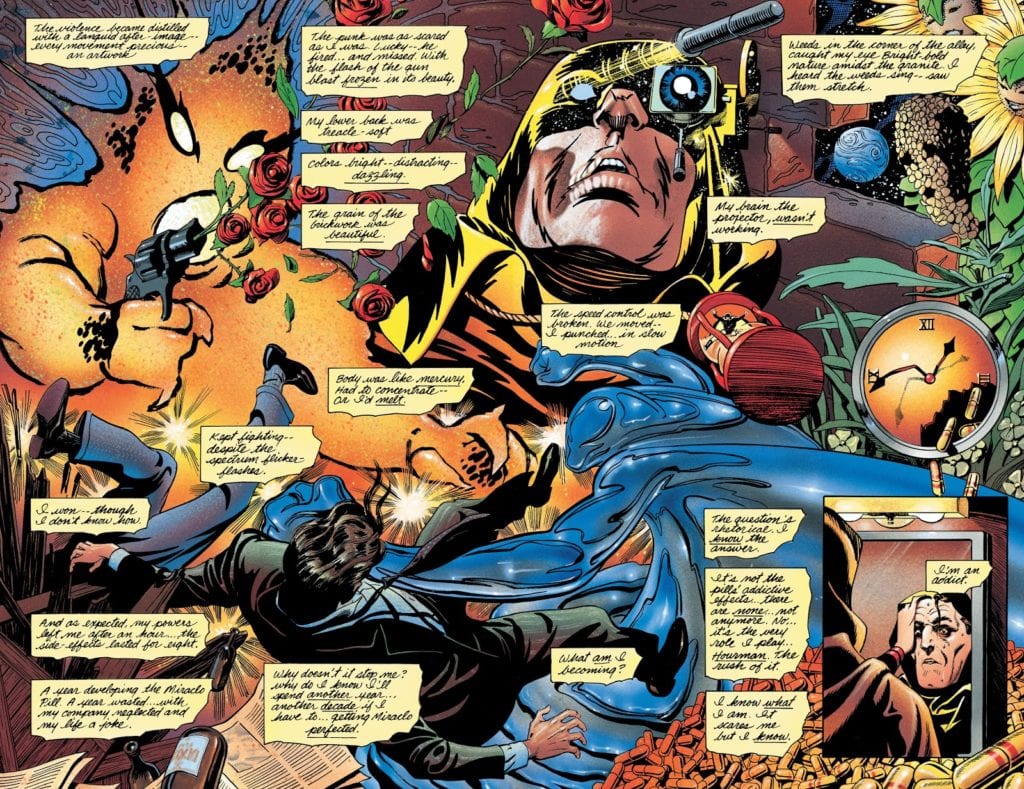
One very notable exception to the costume ban is Rex Tyler, the hero known as Hourman. Rex stands out like a sore thumb. While everyone else hung their cape up a long time ago, he’s still swinging his fists in a bright yellow cape. It’s not that he hasn’t gotten the memo. It’s that he is addicted to the lifestyle and refuses to give it up.
Rex gets his powers from a drug called Miraclo. He becomes super-powered for an hour after taking a Miraclo pill. His addiction to the drug and his addiction to the adrenaline of the lifestyle is immediately concerning. We get the sense that he doesn’t take the dangers seriously. Through Rex, Robinson and Smith put those dangers in perspective. The costumes these heroes wear are given an air of lunacy.
Naivety
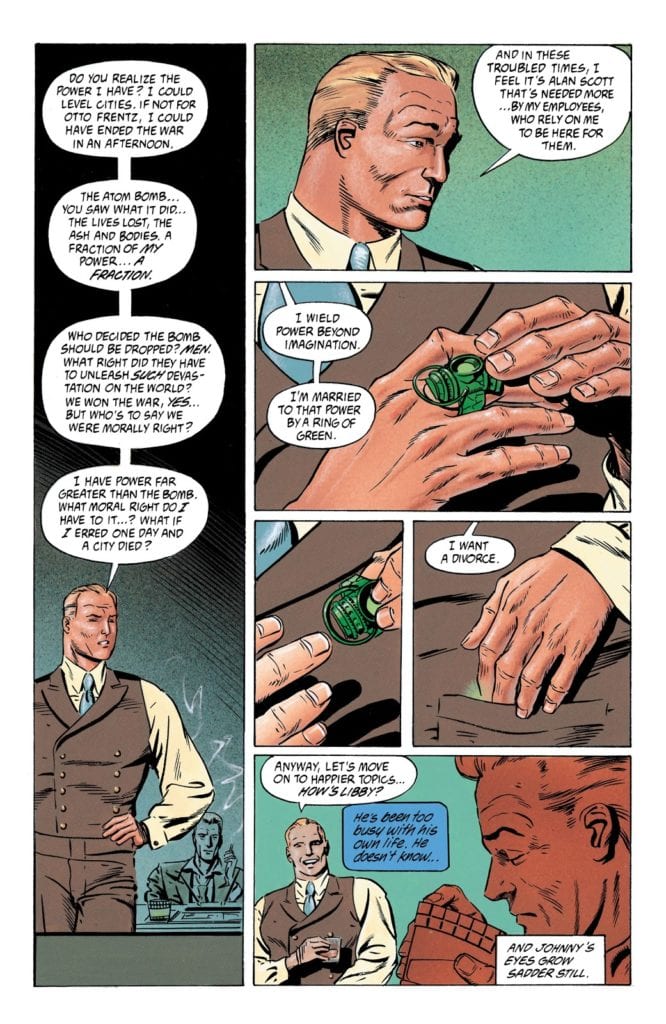
Green Lantern, Alan Scott, is perhaps the most grounded character in the story. He seems to have adjusted the best to the new times they live in. Yet the new world Alan lives in is a world that is vastly more complicated. Robinson discusses the Red Scare through Alan’s character. As the leader of a newspaper, Alan is asked to throw his writers under the bus to spare himself scrutiny.
Rooted in the present, unlike many of the other heroes, Alan fights the good fight in his civilian persona. He sees the time that he flew around, fighting crime in a purple mask, not as a simpler time, but as a more naive time. A time when the world seemed simple enough that you could punch it to make it right. With the House Committee on UnAmerican Activities breathing down his neck, he knows the world isn’t that simple. Nor has it ever been. He uncomfortably twiddles with the green ring on his finger. It’s both part of his costume and the source of his power. To him, it represents how simple-minded he once was.
Counterfeit
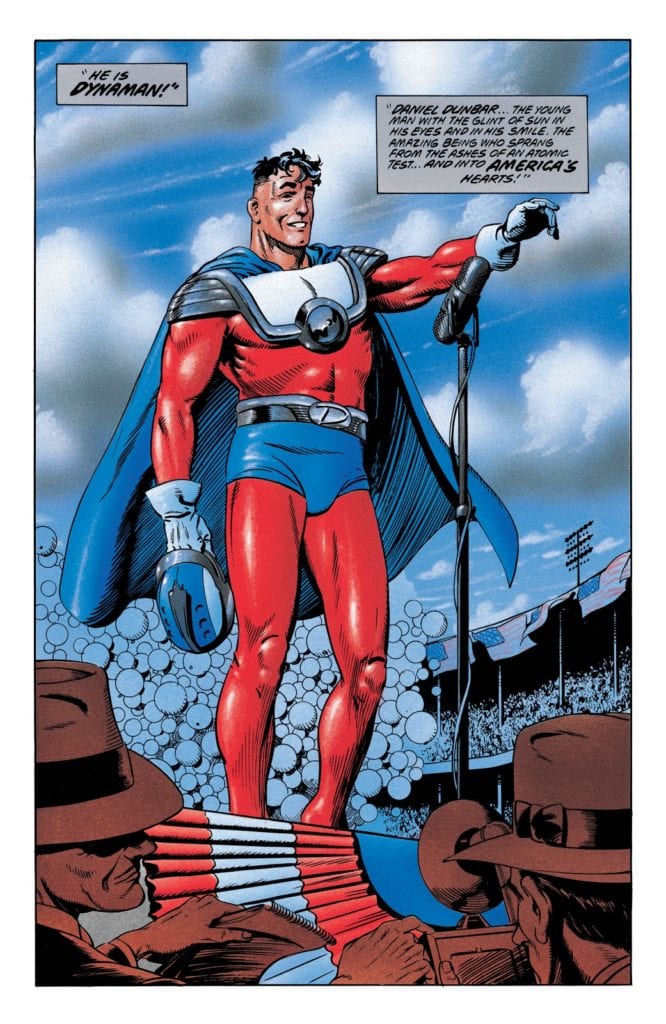
A common use of costumes in the superhero franchise is as a kind of award. When the heroes have passed their initial trials, their rites of passage, they earn the right to wear a costume. And so in The Golden Age, when ex-hero Dan Dunbar is taken in by Tex Thompson, the Americommando, and is given a new suit, something feels off. The cameras and the speeches before a fawning public, all adding to Thompson’s campaign for president, makes the transformation feel disingenuous.
The creative team removes the trials Dunbar must face to earn his new duds. Not only is the transformation mysterious, with hints of the sinister, but it feels entirely unearned. We immediately distrust the boy in the shiny new suit. More so, we distrust his puppeteer. When we’ve seen a hero struggle before getting their superhero identity, we trust them. If we don’t see that, we’re suspicious.
A New Beginning
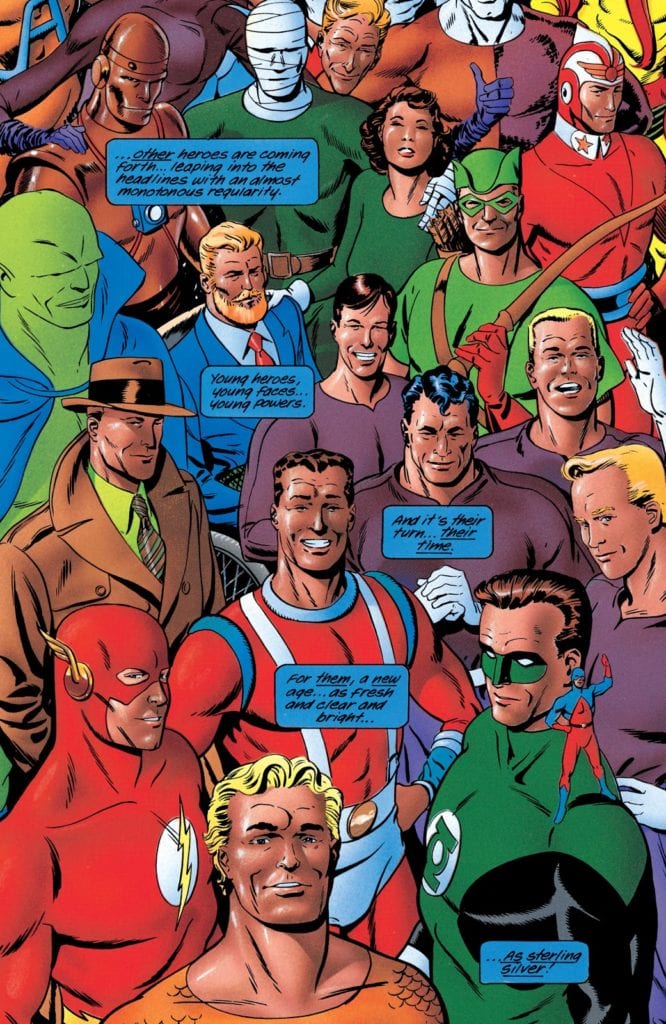
Finally, The Golden Age ends with an ushering in of the new. With the Silver Age, these sparkling new costumes speak of a new beginning. Maybe these heroes won’t make the same mistakes, maybe they will. Either way, it’s a fresh start. As the series comes to a close, the heroes tip their hats to those who are taking their place. They’re relieved of their watch. The torch passes on.
With the creative team’s ending to the graphic novel, the costumes which have at times represented failure, naivety, trauma, addiction or redemption, are given less weight. They’re lost in an influx of new threads. As new costumed heroes come into play, the Golden Age heroes are less worried about their roles. They are no longer the only ones with the responsibility; it is now a shared burden.
Costumes have historically carried symbolic weight in the superhero franchise. And in a graphic novel with few costumes to speak of, they carry more weight than ever. Robinson and Smith explore in JSA: The Golden Age why a hero’s costume casts such a large shadow. Ultimately, this theme has lived on because it resonates. We all suffer from the reputations we’ve created or the responsibilities we’ve taken on. Through JSA: The Golden Age, Robinson shows us why the Green Lantern can relate.

